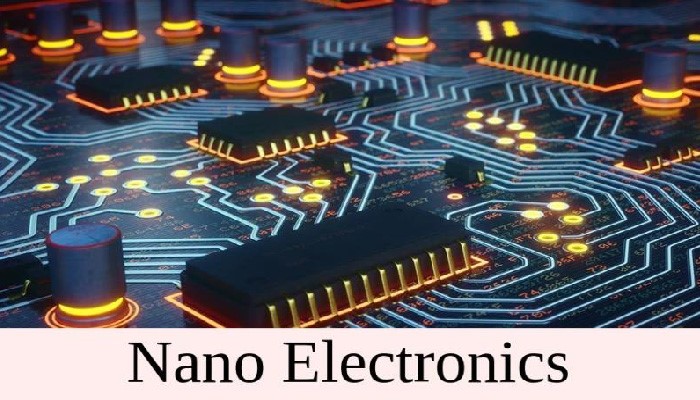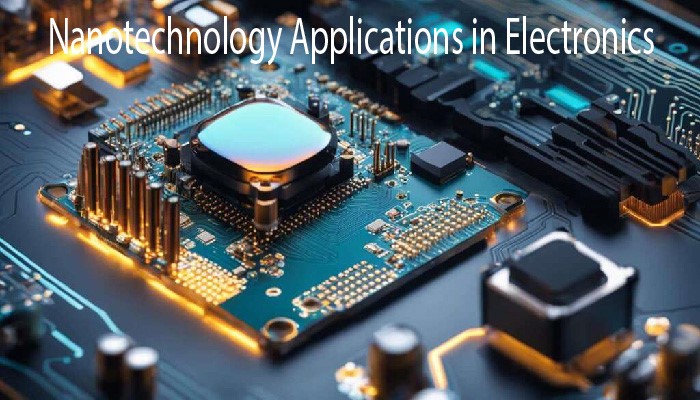Nanotechnology Applications in Electronics: Overview
We will discuss Nanotechnology Applications in Electronics. Welcome to the fascinating realm of nanotechnology, where science fiction meets reality! In this blog post, we will delve into the groundbreaking applications of nanotechnology in the field of electronics. From enhancing device performance to revolutionizing how we interact with technology, nanotechnology is paving the way for innovation like never before. Let’s explore how these tiny particles are making a big impact on our electronic devices!

What is Nanotechnology?
Nanotechnology is the science of manipulating matter on a nanoscale level, dealing with particles that are incredibly small – often at dimensions of 1 to 100 nanometers. To put this into perspective, a single strand of human hair is about 80,000-100,000 nanometers wide! At such minuscule sizes, materials exhibit unique properties and behaviors compared to their larger-scale counterparts.
Researchers use various techniques to design and control structures at the nanoscale, enabling the creation of novel materials with tailored characteristics. This ability to engineer matter at the atomic and molecular levels opens up a world of possibilities across different industries – from medicine and energy to electronics.
In electronics, nanotechnology plays a vital role in developing smaller and more efficient devices by incorporating nano-sized components. These advancements are revolutionizing how we interact with technology on a daily basis.
Advancements in Nanotechnology and Electronics
Nanotechnology has revolutionized the electronics industry with its remarkable advancements. Through manipulating materials at the nanoscale level, scientists have unlocked a world of possibilities for smaller, faster, and more efficient electronic devices.
One significant advancement is the development of nanoscale transistors that enhance computing power while reducing energy consumption. This breakthrough has paved the way for ultra-lightweight and high-performance electronics used in various applications.
Moreover, the integration of nanomaterials like graphene in electronic components has led to stronger and more durable devices. These materials exhibit exceptional conductivity and mechanical properties, making them ideal for enhancing device performance while maintaining durability.
Furthermore, advancements in nanotechnology have enabled the production of flexible electronics that can be bent or stretched without losing functionality. This innovation opens up opportunities for wearable technology and foldable displays that were once thought impossible.
The continuous advancements in nanotechnology are reshaping the landscape of electronics by pushing boundaries and driving innovation towards a more connected future.
Benefits of Nanotechnology in Electronics
Nanotechnology offers a range of benefits in the field of electronics. One significant advantage is the potential for miniaturization, enabling the creation of smaller and more efficient electronic devices. This opens up possibilities for developing compact yet powerful gadgets that can revolutionize various industries.
Moreover, nanomaterials used in electronics exhibit unique properties like increased strength, conductivity, and durability. These characteristics enhance the performance and longevity of electronic components, leading to improved overall device functionality.
Additionally, nanotechnology allows for energy efficiency improvements in electronics through reduced power consumption and enhanced battery life. This not only benefits consumers by prolonging device usage but also contributes to sustainability efforts by conserving energy resources.
Furthermore, advancements in nanoelectronics enable faster data processing speeds and higher storage capacities in devices. This translates to quicker response times and enhanced computing capabilities, meeting the demands of our increasingly digital world.
Current Applications of Nanotechnology in Electronics
Nanotechnology has revolutionized the field of electronics with its current applications pushing boundaries and opening up new possibilities. One prominent use is in the development of nanoscale transistors, enabling faster and more efficient electronic devices. These tiny components are crucial in powering our smartphones, computers, and other gadgets.
Moreover, nanotechnology plays a key role in improving the performance of batteries through nanostructured materials that enhance energy storage capabilities. This advancement paves the way for longer-lasting and more powerful battery solutions for various electronic devices.
Furthermore, nanomaterials are being employed to create ultra-thin flexible displays with enhanced resolution and durability. This technology is driving innovations in foldable phones, smartwatches, and wearable electronics by offering sleeker designs without compromising on functionality.
In addition, nanoparticles are utilized in enhancing sensors’ sensitivity and accuracy in electronic devices like medical equipment or environmental monitoring systems. Nanotechnology continues to push the boundaries of what’s possible in electronics, shaping a future where smaller yet more powerful devices become a reality.
Future Possibilities and Potential Impact
Nanotechnology is poised to revolutionize the electronics industry in ways we can only begin to imagine. As researchers delve deeper into the possibilities of nanoscale materials and devices, the potential for groundbreaking innovations is vast.
In the future, we could see ultra-fast and energy-efficient electronic components that are smaller yet more powerful than ever before. Imagine smartphones with batteries that last weeks or computers that can process data at lightning speed without overheating.
Furthermore, nanotechnology opens doors to flexible and transparent electronics, leading to bendable screens, wearable technology seamlessly integrated into clothing, and even smart windows that adjust transparency based on sunlight exposure.
The impact of these advancements could extend beyond consumer electronics; healthcare, transportation, energy storage – all stand to benefit from the application of nanotechnology in electronics. The possibilities are exhilarating as we embark on a journey towards a more interconnected and technologically advanced world.
Challenges and Concerns with Nanotechnology
As exciting as the advancements in nanotechnology are, there are also challenges and concerns that come with this cutting-edge technology. One of the main worries is related to potential health risks associated with exposure to nanoparticles. Researchers are striving to understand how these tiny particles interact with biological systems.
Another challenge is ensuring the ethical use of nanotechnology in electronics. As this field continues to evolve rapidly, it’s crucial to establish guidelines for responsible research and development practices. Intellectual property rights and regulatory frameworks also need careful consideration to prevent misuse or exploitation.
Moreover, scalability and cost-effectiveness remain key obstacles in fully integrating nanotechnology into electronic devices on a commercial scale. Manufacturers must find ways to mass-produce nano-enabled products efficiently without compromising quality or affordability.
Addressing these challenges will require collaboration among scientists, policymakers, industry stakeholders, and consumers alike to unlock the full potential of nanotechnology in electronics while mitigating any associated risks.
Conclusion:
In a world where technology is advancing rapidly, nanotechnology has emerged as a game-changer in the field of electronics. The applications of nanotechnology in electronics are vast and promising, with potential benefits ranging from improved performance and efficiency to smaller and more powerful devices.
As we continue to explore the possibilities that nanotechnology offers, it is crucial to address the challenges and concerns associated with this revolutionary technology. By overcoming these obstacles through research, innovation, and responsible practices, we can unlock even greater potential for nanotechnology in electronics.
The future holds endless opportunities for nanotechnology applications in electronics. By harnessing the power of nanoparticles and nanostructures, we can revolutionize the way electronic devices are designed, manufactured, and used. With continued advancements in this field, we can look forward to a more connected, efficient, and sustainable technological landscape.
Nanotechnology is set to reshape the electronics industry fundamentally. By pushing boundaries and reimagining what is possible at the nanoscale level, we have only scratched the surface of its potential impact on our lives. Embracing this transformative technology will lead us into a future where innovation knows no bounds.



